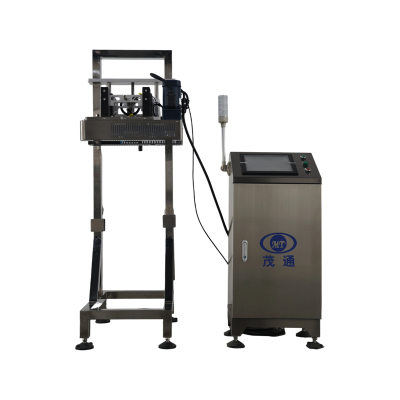A Guide to Detecting Air Leaks in Glass Bottles and Cans: Methods and Steps
Food safety is paramount, and canned goods stored at home require even more careful inspection.
Introduction
Glass bottles and cans are common food packaging, and their seals are directly related to food safety and quality. Leaks can cause spoilage and spoilage of the canned contents, potentially posing a health risk after consumption. This article details several simple and easy methods for detecting air leaks in glass bottles and cans, helping you accurately determine the seal condition of cans in both home and commercial settings.
1. The Impact of Air Leaks on Canned Food
When leaks occur in glass bottles and cans, outside air and microorganisms enter the can, causing oxidation and spoilage of the contents and microbial growth. Common signs of spoilage include discoloration and flavor changes, cloudy soups, and even bulging cans. Severely leaking cans may contain pathogens such as Clostridium botulinum, which can cause food poisoning if consumed. 2 Leak Detection Methods
2.1 Visual Inspection
Before testing, wipe the exterior of the can clean and inspect the cap. A properly sealed glass can cap should be flat or slightly concave. If the cap bulges outward and doesn't return to its original shape after a light press, or if one side bulges out after pressing the other, it's likely a leak.
Also, check the tightness of the cap and the bottle, and check for rust, damage, or cracks. The safety button (vacuum indicator) on the cap is also a key indicator. A properly sealed can cap should be concave. If it bulges, it indicates insufficient vacuum and a possible leak.
2.2 Tapping and Listening
This is a traditional method for inspecting canned goods. Use a small wooden stick or your knuckle to gently tap the center of the bottle cap and determine the vacuum level by the sound:
A crisp, firm sound indicates good vacuum and normal quality.
A muffled or hoarse sound indicates the contents may have deteriorated and the vacuum level is insufficient.
A hollow sound may indicate insufficient contents or deterioration.
The percussion method requires experience, and it's best to compare the percussion with a normal can to improve accuracy.
2.3 Pinch and Press Method
Press the center of the bottle cap with your finger to feel its springiness:
If it presses easily and returns to its original shape quickly after release, the vacuum level is good.
If it's difficult to press or rebounds slowly after pressing, it may be leaking.
If one side bulges when pressed and the other side bulges, the can is either slightly bulging or hard and leaking significantly.
This method is suitable for detecting early leaks, especially cans that haven't yet noticeably deformed. 2.4 Water Immersion Test
This is the most accurate and intuitive leak detection method. The specific steps are as follows:
Prepare a transparent container and fill it with an appropriate amount of warm water (approximately 36 ± 1°C). The water should not be too hot to prevent the glass from cracking.
Completely immerse the glass bottle or can in the water, ensuring that the water level is approximately 5 cm above the can.
Leave it for 1-2 minutes and observe, paying special attention to the connection between the cap and the bottle.
If continuous bubbles rise, this indicates a leak.
For cans that appear suspicious but have no obvious bubbles, gently press on the cap to help reveal potential leaks. This method can detect even small leaks and is a common method used in commercial testing. The following table compares the characteristics of different testing methods:
Test Method Difficulty Accuracy Applicable Scenarios
Appearance Inspection Simple Moderate Rapid Home Screening
Tap and Listen Requires Experience Moderate Rapid Commercial Testing
Pinch and Press Simple Moderate-High Routine Home Inspection
Water Detection More Complex High Precision Testing, Commercial Environments
3. Post-Opening Confirmation Check
If a can is suspected of leaking using the above methods, further verification can be performed upon opening the lid:
Odor Check: Upon opening the can, observe for any unusual odors. A healthy can should have a unique aroma characteristic of the food; a leaking can may have a sour, rancid, or other odor.
Vacuum Verification: A healthy can requires some force to open, and there will be a distinct "pop" sound of air escaping. If the can opens easily without the sound, it indicates a leak.
Contents Observation: Check the contents for signs of deterioration such as mold, unusual discoloration, or cloudy liquid.
4 Precautions and Safety Recommendations
Safety First: Ensure the cans are at room temperature before testing to avoid large temperature fluctuations that could cause glass breakage.
Temperature Control: When using the immersion method, the water temperature should not be too high. Cans fresh from the refrigerator should be placed in warm water to acclimate before being placed in the testing water.
Distinguishing Can Types: There are three types of cans: physical (excessive contents), chemical (hydrogen expansion), and biological (microbial growth). The first two may not affect consumption, but biological (microbial) cans pose a safety risk. If the distinction is difficult, it is recommended that they be discarded.
Shelf Life Reference: Even if no leaks are detected, check that the cans are within their expiration date. Expired cans, even if well-sealed, are not recommended for consumption.
Conclusion: Mastering the techniques for detecting air leaks in glass bottles and cans is a crucial skill for ensuring food safety. Using a combination of testing methods is more reliable than using a single method alone. For safety reasons, it's recommended not to consume food if the test results are questionable. Proper storage conditions (avoiding high temperatures and humidity) can also effectively extend the shelf life and safety of canned foods.
We hope this article will help you better assess the seal condition of glass jars and cans, allowing you to enjoy safe and delicious canned foods.




